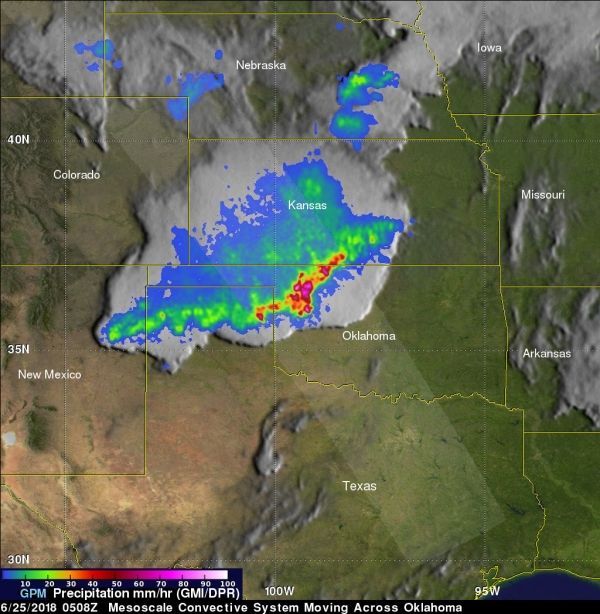When a powerful complex of thunderstorms affected Oklahoma NASA’s Global Precipitation Measurement mission or GPM core satellite analyzed the power of those storms. More storms are expected on June 26.
An MCS or mesoscale convective system is a complex of thunderstorms that becomes organized on a scale bigger than individual thunderstorms but smaller than extratropical cyclones. This group of thunderstorms usually persists for several hours or more.
The GPM Core observatory satellite passed over Oklahoma on Monday, June 25, 2018 at 4:08 a.m. CDT (0508 UTC) when an MCS was affecting the state. The GPM satellite makes measurements of precipitation with its GPM Microwave Imager (GMI) and Dual-Frequency Precipitation Radar (DPR) instruments every 95 minutes. GPM is a joint mission between NASA and the Japan Aerospace Exploration Agency, JAXA.
Read more at NASA / Goddard Space Flight Center
Image: On June 25, GPM's DPR measured rain falling at a rate of greater than 7.4 inches (188 mm) per hour in a few of the powerful storms that were located over northwestern Oklahoma. GPM's radar showed a few storm tops in this MCS were reaching heights of over 9.5 miles (15.4km).
CREDITS: NASA / JAXA, Hal Pierce


